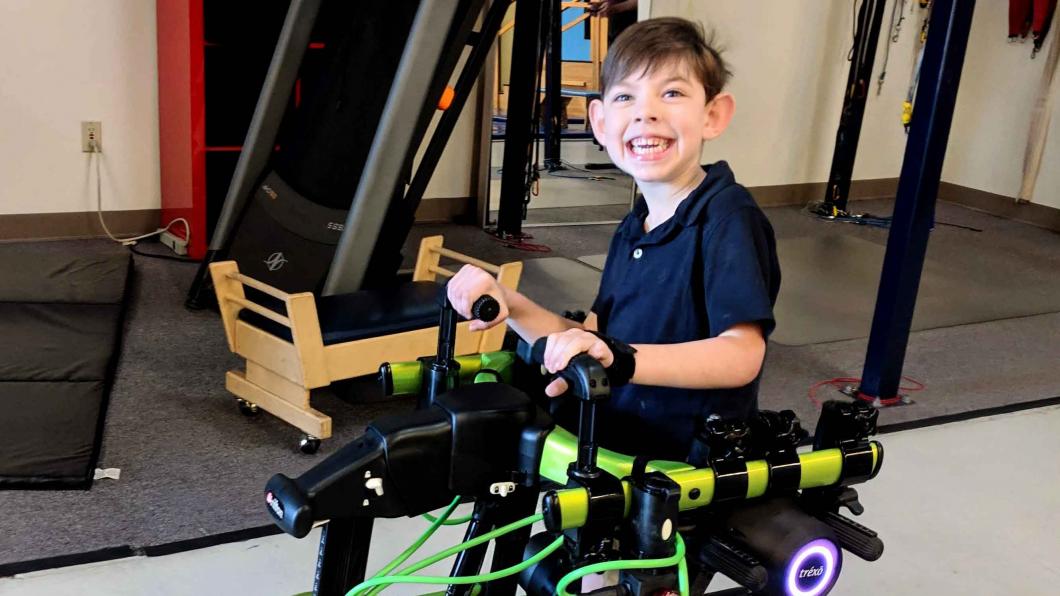
Say hello to the future: Using robotics to push boundaries
As the Bloorview Research Institute (BRI) undergoes its largest expansion to-date, things are getting even more futuristic in its High Performance Hub.
The newest addition to the Institute’s research arsenal is the Trexo Exoskeleton—a wearable skeletal system, powered by robotics that will give children with mobility issues the chance to stand and walk. The version the hospital has acquired, in particular, will help support kids’ pelvis, hips, knees, and ankles, ultimately strengthening their muscles and potentially helping to train the brain through these motor learning-based experiences with walking.
And for Dr. Tom Chau and Dr. Virginia Wright, its a piece of equipment they know will help push boundaries and assist in studying new ways to help kids and youth with disabilities.
While Dr. Chau, who leads the PRISM lab, has spent the last few years focused on brain-computer interfacing, Dr. Wright, who leads the SPARK lab, has always been driven by the connection to clinical practice, with many of her studies sparked by questions and ideas that have come from clinicians and kids and families.
Their interests, combined with their individual curiosities, gives them the perfect dynamic to study the impacts of the exoskeleton on kids and youth with disabilities.
“Very little pediatric exoskeleton research exists to date. We have to conduct studies to determine the ways that exoskeletons can benefit kids with disabilities, what programs of training and practice would be most helpful, and which types of kids could benefit most from this robotic intervention,” says Dr. Chau.
Thanks to the Kimel Family and BMO for their generous support of the High Performance Hub, the exoskeleton is the now the first of three that the BRI will be acquiring, with the other two coming in different sizes in order to study a wide range of children of different ages and body sizes. It will also allow the BRI to build on the foundational research that Dr. Wright’s team has already done with the Lokomat—using robotics to help kids with their gait is an area BRI already has expertise.
They hope their research will help give people with disabilities more evidence-based choices about future treatment options.
“Having access to this innovative exoskeleton will open up new and often first-time opportunities for kids with serious walking limitations to experience independent walking,” says Dr. Wright.
“But it is essential that we have a much deeper and scientifically grounded understanding of its effects and impact, before it is moved into regular clinical use.”
In particular, the exoskeleton, will be used by Ph.D. student Stefanie Bradley in her research on muscle fatigue in children with neuromotor conditions.
“The overall goal is to explore the advantages and limits of mobile pediatric exoskeletons,” says Stefanie.
Stefanie is interested in studying how the brain and lower limb muscles change as a child uses the exoskeleton, seeing how the brain adapts following repetitive use.
While the BRI is not the first to conduct studies with the Trexo’s impact in pediatrics research, they will be the first to use it to study the exoskeleton in conjunction with brain imaging in the hospital’s newest and fully-accessible research MRI.
“We have a lot of research to do to answer all the questions,” adds Dr. Chau. “My hope is that these robotic devices might provide some kids with new options for participation in life activities that are important to them, and hence improve their overall wellness.”
To find out more about the $32-million BRI expansion, follow the journey here.